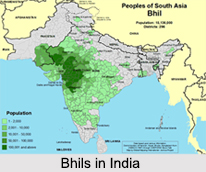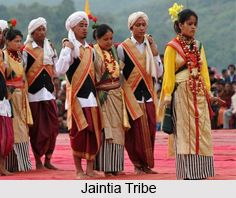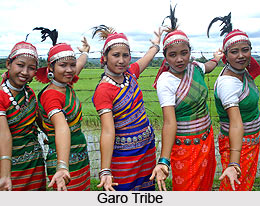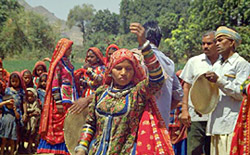Quite a handful of tribes reside in every hook and corner of the state of Madhya Pradesh. All these tribes have drawn the attention of so many anthropologists of the Indian subcontinent over the years. Amongst them , they have concluded that Saharia is quite significant. Some of the anthropologists even like to identify these Saharia tribes as Sor tribes.
The major concentration of this Saharia tribal community is found in the mountainous region of the state. In order to carry on conversation, these Saharia tribes use the beautiful language of the famous Munda language family . This language has a belonging in the famous Austro-Asiatic language family.
What is also interesting is to note that the Saharia tribes maintain less contact with the external world and have trued to maintain their originality in tact. The popular saying is that between 1864 and 1866, the mountainous region was being brought in under control of the British military forces, which carried out or transmitted these Saharia tribes. Afterwards, when the British rulers started accumulating taxes, the Saharia `rebelled`. Till date these Saharia tribes are thought to be one of the most rebellious tribes although there is no evidence to support this fact. Even today they have a reputation as being extremely fierce, although anthropologists have not found this to be true.
As far as the education of these Saharia tribal community is concerned, they are less prone to go for education and learning also. However, amongst the young generation, the present trend is there to read and write and that too in their own language. However, the literacy rate of the Saharia tribes remains quite low till date.
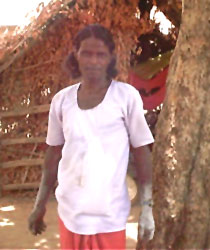 If one dissects the whole of the Saharaia society , one can find that the Saharia can be segregated into 5 sub groups . These are namely, the Jati, Arsi, Muli, Kindal, and Kumbi. What is really remarkable is that these divisions have been made as per the occupation that these Saahria tribes adapt to. For example, The Jati are cultivators; the Arsi are `weavers`, the Muli are iron laborers, the Kindal are basket manufacturers; and the Kumbi are `potters`. Also these sub groups of the Saharia tribes are again be divided into approximately seventeen territorial units, instead of any clans. These Saharia tribes are open to get married marry within these divisions, and they in general reside as extensive family units.
If one dissects the whole of the Saharaia society , one can find that the Saharia can be segregated into 5 sub groups . These are namely, the Jati, Arsi, Muli, Kindal, and Kumbi. What is really remarkable is that these divisions have been made as per the occupation that these Saahria tribes adapt to. For example, The Jati are cultivators; the Arsi are `weavers`, the Muli are iron laborers, the Kindal are basket manufacturers; and the Kumbi are `potters`. Also these sub groups of the Saharia tribes are again be divided into approximately seventeen territorial units, instead of any clans. These Saharia tribes are open to get married marry within these divisions, and they in general reside as extensive family units.
It is only natural; these Saharia tribes have taken up numerous occupations. Cultivation is the chief cultivation. The Saharia cultivators take up the "slash and burn" way of cultivation along the hill slopes. This has enabled them into tremendous conflict with the Forestry Department. Their chief crops are gourds, millet, sorghum, and wild rice.
During the beginning of 1900 and onwards, many of these Saharia tribes have transmigrated to several areas and took provisional wage-paying jobs on tea plantations or as road builders. Many remained in their new locations and became farmers or field workers. The most focused occupation is the shaman. Shamans are religious leaders who use to heal the sick by magic, converse with the spirits, and manage events. There are also heritable positions, which consist of village heads, deputy heads, pyre lighters, and also priests of the village deity. Public outlook and conversation are the chief forms of social control.
The house settlements are quite wonderful to look at. In general, these Saharia villages comprises of numerous quarters, better known as longlongs. Each longlong is dwelt by one patrilineage. What is also important is to note that the line of decent can be easily traceable from the man`s side of a family. It is called birinda.
Numerous houses, which belong to some of the close relatives, might be brought together on one terrace. So much so, that these Saharia can prolong the conversations even over the dividing walls.
The houses have built roofs with thatches and are made up of stone smashed with red mud. During the autumn season, the villages are predominately abandoned; these Saharia tribes proceed to highly strewn "baby houses" in order to watch their crops against wild animals.
These Saharia tribes have developed tastes mainly for non- vegetarian dishes. Mainly these Saharia tribes savor maximum of the animals. Their dishes are based on watery porridge, which is mostly garnished with vegetables or meat. Palm wine is a well-liked beverage. These Saharia tribes arrange all of their food by churning it vigorously. At the meeting point of the mountains, these Saharia tribes create their markets where these tribes carry on the activities of buying and selling on the villages. These Saharia exchange forest products like millet for clothes, iron ax heads, plow tips, salt, chilies, jewelry etc.
This Saharia tribal community has got orientation towards religion and spiritualism. The Saharia put into practice their conventional tribal religions. Till date, these Saharia tribes carry on the practice of offering animals like buffalo as mark of offerings.
However, these Saharia tribes are also conscious of certain ideals of the Hindu religion and make use of them in shaping their individual identity. Since maximum of these Saharia tribes have still refrained from pursuing education, on certain erudite matters these Saharia tribes depend in the knowledge on the `shaman`. The popular belief is that the spirits of the dead causes all kinds of sickness and also deaths.


















